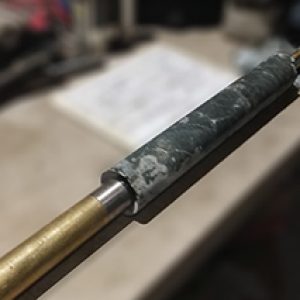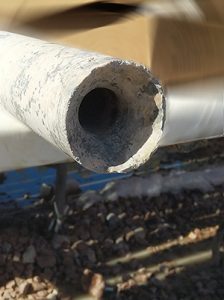Stress Measurements
Agapito Associates LLC provides services for measuring in-situ horizontal stresses using an innovative down-hole measurement technique, developed by Sigra Pty, Ltd. of Australia, that represents the most advanced biaxial overcore stress measurement system in the world.
Sigra Overcoring
The Sigra IST (In-situ Stress Tool), developed by Sigra Pty, Ltd. of Australia, is a device for measuring the horizontal in-situ stress field from surface and underground coreholes in advance of development or to aid in excavation design and layout. By determining the horizontal stress field prior to mining or excavation, the layout and sequencing can be optimized to mitigate the effects of horizontal stress.
Agapito has performed more than 200 successful Sigra measurements throughout 16 states in the USA, across Canada, and even overseas. Since 2018 alone, this innovative and reliable method has been employed from northern Quebec to southern Arizona and from the Western Cordillera of British Columbia to the Upper Peninsula of Michigan.
Why Sigra?
Knowledge regarding the magnitude and variability of in-situ stresses at depth is vital to the successful design of underground excavations. To build an accurate picture of local stresses, Agapito Associates employs the Sigra IST. The Sigra method provides a 2D stress ellipsoid that characterizes the primary and secondary stress magnitudes in the horizontal plane, along with the orientation of the maximum and minimum components. The IST incorporates an internal battery-powered datalogger, allowing for wireless deployment at depths up to 6,500 feet (2,000 meters).
The IST technique provides more information than the competing hydraulic fracturing method and can be conducted at significantly lower cost. Measurements can be made rapidly, with the wireline deployed, reusable tooling system, depending on the depth of the hole. The system components are rugged, reliable, and sufficiently compact and light (400 pounds, 180 kilograms) to permit deployment in remote sites.
Two basic approaches are available for mitigating horizontal stress instabilities: (1) minimizing stress concentrations by optimizing entry/panel alignments and panel extraction sequences (stress control), and (2) strengthening the effective roof and floor strata units immediate to the entry opening (strength control). To properly apply these principles, a knowledge of horizontal stress directions and magnitudes is essential.
Horizontal stresses can vary between strata depending upon contrasts in rock stiffness and other geomechanical factors; a series of Sigra measurements can be performed in a vertical borehole up to and in excess of 6,500 feet (2,000 meters) deep to characterize the stress profile. The test hole is drilled using Boart Longyear HQ wireline drill string equipment and can be collared either on surface or at a designated site underground. All Sigra tooling and components are deployed using the wireline method. On-board magnetometers and inclinometer-accelerometers record the tool inclination and borehole orientation with respect to magnetic north. Sigra Pty, Ltd. has produced a concise and informative video illustrating how the IST is deployed and gathers stress data: In-situ Stress Testing by Overcoring.
In addition to the IST, the system utilizes three other custom wireline tools: a counterbore tool, a pilot hole tool, and the IST setting tool. Once coring has reached the desired measurement depth, the counterbore tool is lowered to remove any remaining core stump and drill a conical centering socket. The counterbore is withdrawn, and the pilot hole tool is lowered. Using water pressure for thrust and rod rotation, the tool drills a 1-inch (25-millimeter) diameter hole, 20 inches (500 millimeters) deep, centered in the bottom of the HQ hole. The IST is inserted into the setting head and lowered into the hole where it is forced into the pilot hole and wedged in place by a setting weight. The rods are raised approximately 20 feet (6 meters) so that the magnetometers in the IST can record the tool orientation free from magnetic interference. The core barrel is then lowered, and normal coring commences. During overcoring operations, a continuous record of pilot hole diameter, measured in six radial directions, is obtained and stored electronically. Once coring has been completed past the pilot hole, the core containing the IST is retrieved, and the data are downloaded and reviewed to evaluate the quality of the overcore test. Preliminary results are available almost immediately with on-site biaxial testing of the core to determine properties; however, the core is wrapped and sent to a laboratory to verify elastic modulus and Poisson’s Ratio, which are necessary for calculating the final stress magnitudes. Although stresses can be calculated using diameter measurements in only three directions, the six diameters measured by the IST provide redundancy and permit evaluating measurement errors and selecting the best possible solution.
Innovations
Recent developments and innovations to the Sigra tooling allow for deployment of the stress measurement tool in drillholes of any orientation, to include coreholes oriented vertically upward. Additionally, a 3D IST has been developed allowing for determination of principle, secondary, and vertical stress magnitudes and orientations utilizing similar wireline deployable tools as the Sigra 2D IST.





